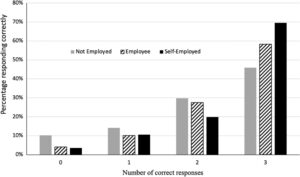Financial modelling in Excel is an essential skill for any finance professional. It is a powerful tool that allows users to create detailed financial models that can be used to analyze and project potential outcomes of different scenarios.
Excel is easily accessible and can be used to produce straightforward models that are capable of producing reliable, accurate results. By leveraging the functions available in Excel, users can quickly create complex models that allow them to explore a variety of data points with ease.
Benefits of Excel for Financial Modelling
Financial modelling in Excel is a powerful tool for businesses to analyze and forecast their financial performance. There are numerous benefits of using Excel for financial modelling, including increased accuracy, flexibility, scalability, and cost savings. By utilizing Excel’s advanced features such as pivot tables and macros, businesses can construct detailed financial models that account for all the factors that affect their finances.
Using Excel as a platform offers many advantages over other software programs used in financial modelling. For example, it is easy to set up complex formulas within the same cell or across multiple sheets with just a few clicks of the mouse.
Additionally, formulas can be changed and customized on-the-fly without having to re-enter large amounts of data or adjust an entire spreadsheet. This saves time and ensures accuracy when making decisions about how best to manage finances.
Principles of Financial Modelling
Financial modelling is a critical tool in the modern business world, as it provides detailed forecasts of expected financial performance. It is used to analyze and plan strategies for any organization, including investment decisions, budget allocations and more. Understanding the principles of financial modelling in Excel can help any user gain clarity on their data and make informed decisions.
Excel-based financial modelling relies on establishing accurate assumptions about future cash flows which are then projected into the future. By leveraging information from historical sources such as balance sheets or income statements, users can create a dynamic model that allows them to project how different changes will affect their bottom line over time. Through this process, one can gain insight into the long-term effects of certain investments or other initiatives on an organization’s profitability.
Excel Skills for Financial Modelling
Excel Skills for Financial Modelling are essential for anyone interested in crunching numbers, building financial models, and analyzing data. Financial modelling involves the use of Excel to develop a framework to forecast the future performance of an organization or project. With the right skills and knowledge, one can create models that accurately calculate cash flows, revenue projections, capital investments and any other variables involved in business operations.
It is important to have a solid understanding of both basic and advanced Excel functions when creating financial models as this will help ensure accuracy. Knowledge of formulas such as SUMIFS(), IF() statements, VLOOKUP(), Pivot Tables and other useful tools are key to creating robust financial models.
Best Practices for Modelling in Excel
Financial modelling in Excel is a powerful tool for creating elaborate models to analyze investments and forecast future events. However, getting the most out of financial modelling in Excel requires having an understanding of best practices that will maximize its potential. In order to ensure accuracy and reliability, here are some key tips on how to use Excel effectively when building financial models.
When starting a new model, first create an accurate foundation that meets the scope of your modelling project. This can be done by setting up formatting and defining labels for each column before entering data into the spreadsheet.
Using formulas like SUM or AVERAGE correctly can also help build your model quickly and accurately. Additionally, it’s important to understand the limitations of using Excel; while helpful in certain situations, it cannot replace advanced programs like Python or R to perform complex computations and analysis.
Conclusion
The conclusion of the article on ‘Financial Modelling in Excel’ is that it is a valuable tool for businesses. Financial modelling in Excel helps to improve efficiency and accuracy when dealing with financial data, as well as optimising decision-making processes. It can also be used to analyse different scenarios and forecast outcomes, allowing businesses to stay ahead of their competitors.
Financial modelling in Excel allows users to have complete control over the inputs used within their model, which means more accurate results can be achieved. Additionally, complex calculations can be automated using formulae which makes the process faster and less prone to error. This ensures all decisions are based on reliable figures and predictions.
Overall, financial modelling in Excel is an invaluable tool for businesses of all sizes; it allows them to make informed decisions quickly while improving accuracy and reliability across all areas of finance.











Be First to Comment